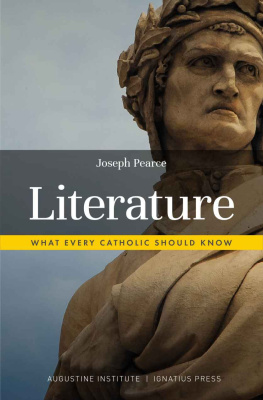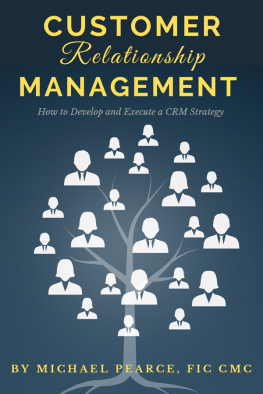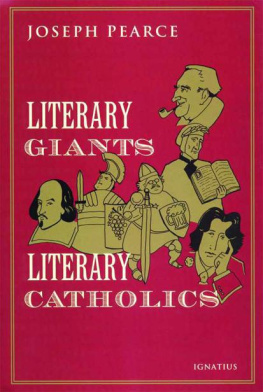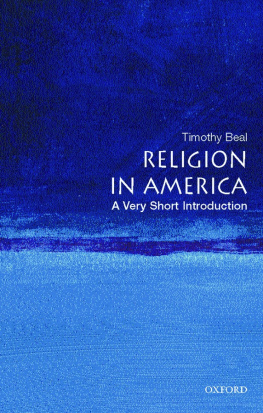Religion in America
SOCIOLOGY IN THE TWENTY-FIRST CENTURY
Edited by John Iceland, Pennsylvania State University
This series introduces students to a range of sociological issues of broad interest in the United States today and addresses topics such as race, immigration, gender, the family, education, and social inequality. Each work has a similar structure and approach as follows:
introduction to the topics importance in contemporary society
overview of conceptual issues
review of empirical research including demographic data
cross-national comparisons
discussion of policy debates
These course books highlight findings from current, rigorous research and include personal narratives to illustrate major themes in an accessible manner. The similarity in approach across the series allows instructors to assign them as a featured or supplementary book in various courses.
A Portrait of America: The Demographic Perspective, by John Iceland
Race and Ethnicity in America, by John Iceland
Education in America, by Kimberly A. Goyette
Families in America, by Susan L. Brown
Population Health in America, by Robert A. Hummer and Erin R. Hamilton
Religion in America, by Lisa D. Pearce and Claire Chipman Gilliland
Religion in America
Lisa D. Pearce and
Claire C. Gilliland
UNIVERSITY OF CALIFORNIA PRESS
University of California Press
Oakland, California
2020 by the Regents of the University of California
Sociology in the Twenty-First Century, 6
Library of Congress Cataloging-in-Publication Data
Names: Pearce, Lisa D. (Lisa Deanne), 1971 author. | Gilliland, Claire C., author.
Title: Religion in America / Lisa D. Pearce and Claire C. Gilliland.
Other titles: Sociology in the 21st century (University of California Press) ; 6.
Description: Oakland, California : University of California Press, [2020] | Series: Sociology in the twenty-first century; 6 | Includes bibliographical references and index.
Identifiers: LCCN 2019059455 (print) | LCCN 2019059456 (ebook) | ISBN 9780520296411 (cloth) | ISBN 9780520296428 (paperback) | ISBN 9780520968929 (ebook)
Subjects: LCSH : Religion and sociologyUnited States. | Religion and politicsUnited States. | United StatesReligious life and customsHistory.
Classification: LCC BL 2525 . P 43 2020 (print) | LCC BL 2525 (ebook) | DDC 200.973/09051dc23
LC record available at https://lccn.loc.gov/2019059455
LC ebook record available at https://lccn.loc.gov/2019059456
Manufactured in the United States of America
28 27 26 25 24 23 22 21 20
10 9 8 7 6 5 4 3 2 1
Contents
Figures, Tables, and Text Boxes
FIGURES
TABLES
BOXES
Acknowledgments
We are exceedingly grateful to the many people who played a part in the evolution of this book. First and foremost, for the invitation to participate in the community of scholars writing books for the Sociology in the Twenty-First Century series at the University of California Press, we thank John Iceland (series editor) and Naomi Schneider (executive editor). Their ideas, feedback, and support along the way have been invaluable. We also greatly appreciate the guidance and dedication of Benjy Mailings and Summer Farah (editorial assistants) in helping finalize all parts of the book, literally from the front to back cover. This book has greatly benefited from wise recommendations offered by Roger Finke, Jerry Park, Jenny Trinitapoli, and one anonymous reviewer along the way. Their much-appreciated insights helped enrich the development of the book and hone its core contributions.
We owe a great debt to our students, friends, and colleagues at the University of North Carolina at Chapel Hill. The curiosity and thoughtfulness of many of Lisas SOCI 429: Religion and Society students served as inspiration and barometer for the books content. Past and present graduate students, including Alyssa Browne, Erin Davenport, Reed DeAngelis, Katie Furl, George Hayward, Laura Krull, and Jane Lee all provided very helpful comments and edits in addition to moral support and encouragement all along the way. We owe Jessica Pearlman a great deal of thanks for her methodological expertise and her willingness to work with us on analyses for this book. Lisa is very grateful to Michele Berger and Karolyn Tyson for their insights and support in the writing process. Claire thanks her graduate student peers for their advice, perspectives, and listening ears at all stages of this project. We also thank Tania Jenkins for feedback on the conclusion. In general, we are fortunate to work in the incredibly generative and generous environments of the Department of Sociology and the Carolina Population Center where faculty, staff, and students make this work possible and rewarding.
At key moments in this journey, others stepped in to provide support. Jacquie and Nadine and the space and sustenance they provide at Eastons Nook sparked ideas and propelled the books completion. We are also grateful to Kristy Johnson for her high-quality editing assistance with multiple chapters.
For all of these instrumental forms of support from friends and colleagues, we are forever thankful. The book has benefited greatly from their assistance. Any errors or oversights in the pages to come are owned fully by us.
Finally, we sincerely thank and express the full depth of our love and appreciation to our families for making our work and our lives richer. From the bottom of her heart, Lisa thanks Eric and Natalie for their love, grounding humor, and patience. Claire is grateful for Mac and for her family for their consistent support and love, and thanks her community of friends in Chapel Hill and beyond for their kindness and laughter.
Introduction
UNDERSTANDING RELIGION IN AMERICA
In God We Trust was first printed on US coins in 1864 during one of the most divisive periods of US historythe Civil War era. This motto endures as a symbol of both religions importance in American society and religions potential to unite and divide. Proponents of first placing In God We Trust on money considered it a national disgrace to not recognize God on US coins.
Abraham Lincoln was the first president of the United States to sign this act of Congress into law. Analyzing Lincolns personal letters and Second Inaugural Address, Justin Latterell suggests that although most proponents for adding In God We Trust to coins appear to have done so out of nationalistic pride and as an appeal to Gods favor toward the nation, Lincoln saw it as an assertion of humility.phrase demonstrate the centrality of religion as a system of meaning in American life while at the same time revealing that religion is often understood and experienced by different Americans in different ways.
These four short words, In God We Trust, have fallen in and out of favor over time and across regions, reflecting interesting dynamics and complexities in the religiousness of the US population. In 1909, President Theodore Roosevelt took the motto off two coins during a congressional recess, arguing that the motto on money was a form of irreverence that cheapened the phrase. More recently, states such as Arkansas (in 2017) and Florida (in 2018) have mandated that In God We Trust be visibly displayed in their public schools. You can find the motto carved in stone on many public monuments, courthouses, and government buildings.














